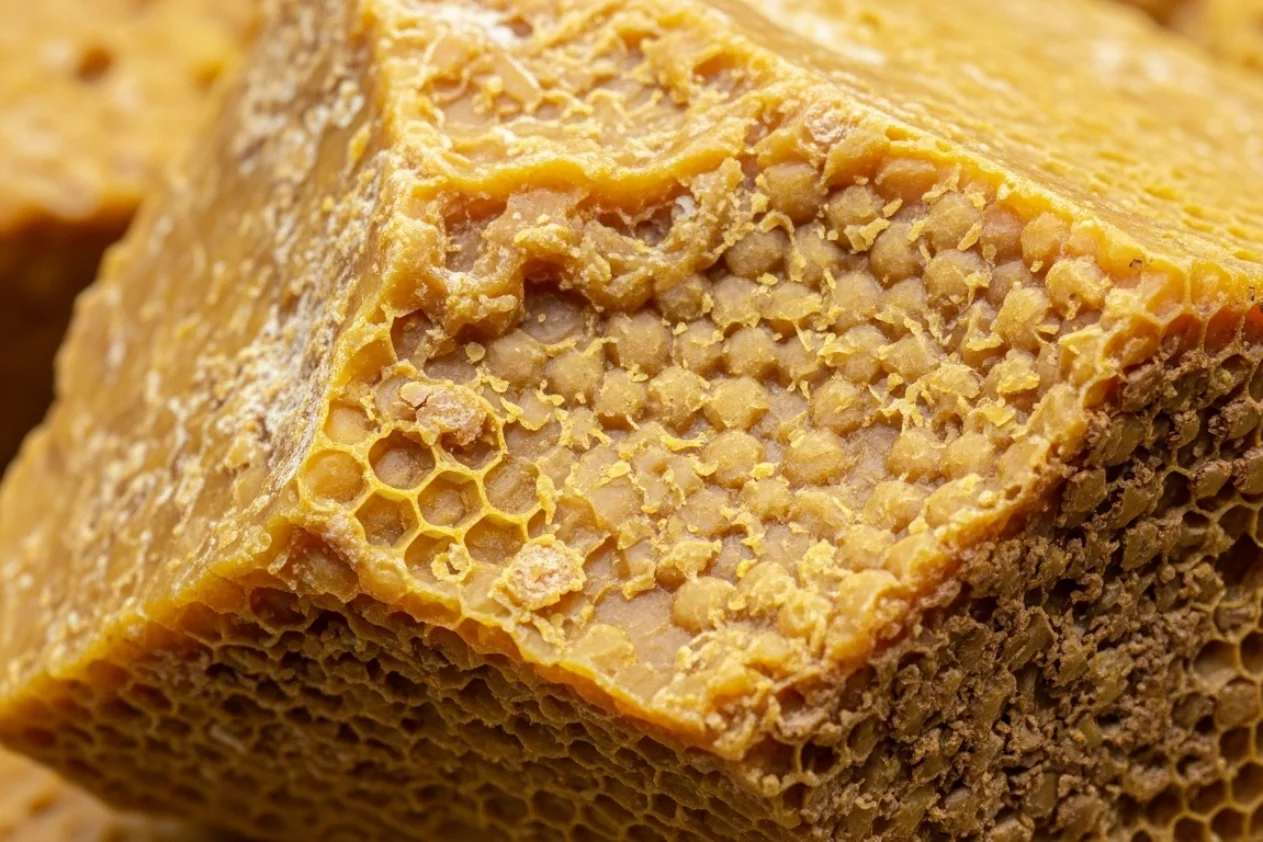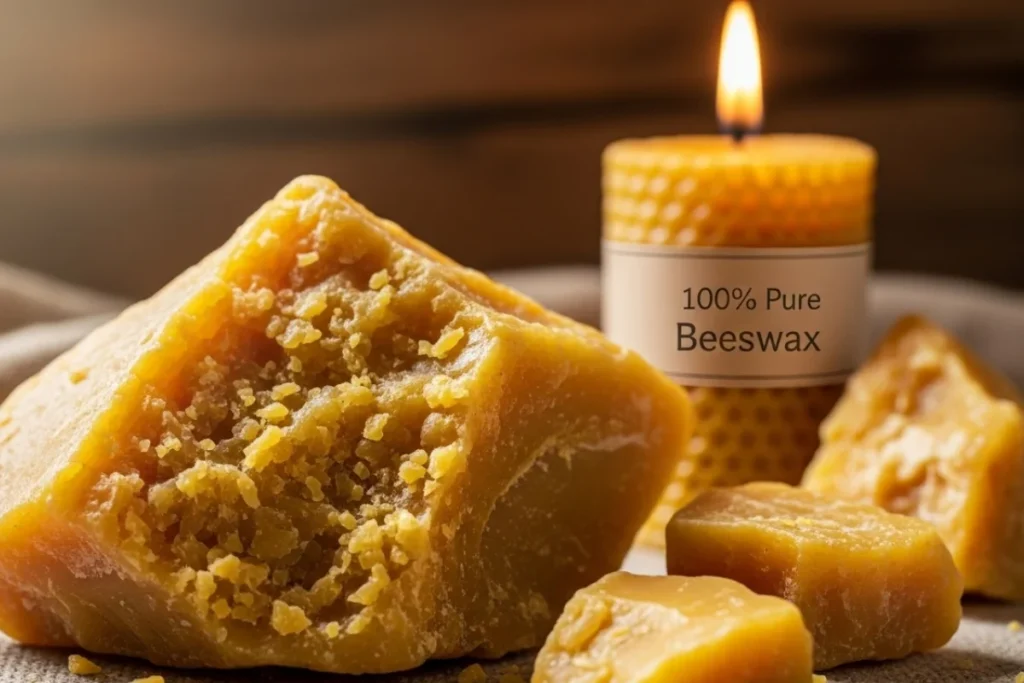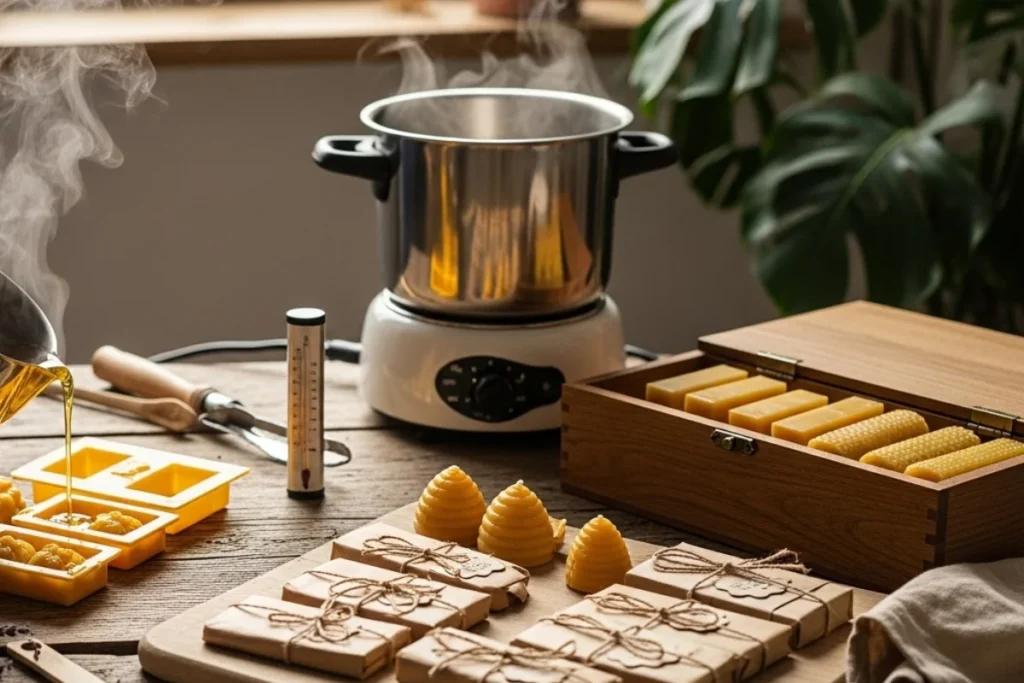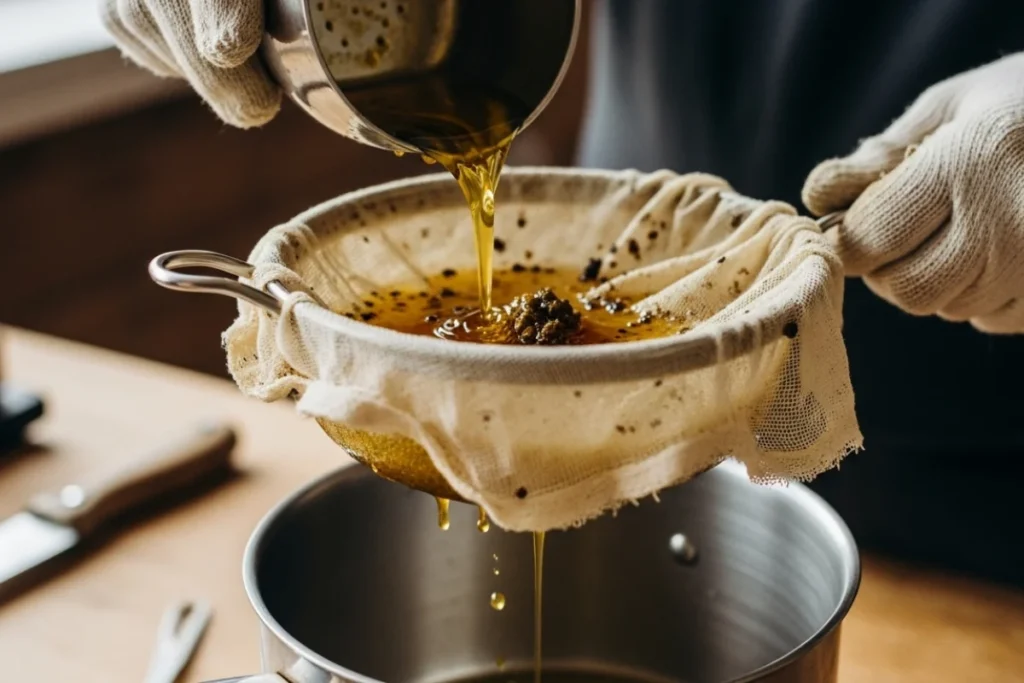

How to purify raw beeswax at home? Whether you’re a beekeeper with frames of raw wax or a crafter who’s purchased unprocessed beeswax, turning that dirty, debris-filled substance into clean, usable wax is easier than you might think.
As a fifth-generation beekeeper at Sweet Comb Chicago, I’ve purified countless pounds of beeswax using simple household tools. Today, I’ll walk you through the entire process step by step.
Raw beeswax straight from the hive is far from the golden, clean material you need for crafting. It’s actually packed with all sorts of stuff you don’t want in your final product; a reality every beekeeping enthusiast quickly learns. What you’ll typically find in raw beeswax:
Purification isn’t just about aesthetics—it’s essential for any project. According to a PMC Industrial-Scale Decontamination Study, properly filtering raw beeswax can reduce pesticide contamination by up to 96.7% in just two cycles. That’s why mastering beeswax purification techniques is so important.
Clean wax makes all the difference in your projects:
The purification process transforms a crude material into a valuable crafting ingredient that’s actually enjoyable to work with.

Before you begin the beeswax cleaning process, gather these basic tools for a successful purification:
For cleaner wax and more effective beeswax filtering methods, consider these additional items:
Beeswax is flammable and can reach temperatures that cause severe burns. Let’s be real—this isn’t something to mess around with. Always prioritize safety with these precautions:
Critical safety rules you can’t ignore:
Start by breaking your raw beeswax into smaller pieces. Think of it like chopping vegetables—smaller pieces mean more surface area and more even melting.
If you’re working with cappings or frames, scrape off as much honey as possible first. The less honey in your wax, the easier the purification process will be.
Removing Excess Honey
Here’s a simple but effective trick: rinse your wax pieces in cool water to remove surface honey. Don’t stress about getting every last drop. The water bath method we’ll use later will help separate any remaining honey during melting.
According to the International Journal of Research Studies in Biosciences, manual extraction methods recover an average of 32.2% pure beeswax from crude wax, so proper preparation maximizes your yield.
Fill your pot about 1/3 full with water, then add your raw beeswax pieces. The water creates a buffer that prevents the wax from burning.
Heat the mixture slowly until the wax completely melts, which typically occurs around 145°F (63°C).
The First Melt Benefits
This initial melting serves several purposes:
Once fully melted, remove from heat and let it cool completely, usually overnight. The wax will form a solid disc on top of the water, with debris trapped underneath.
After your wax has solidified, remove the disc and scrape off any debris from the bottom. This is your first level of filtration.
For the second melting, you have two options:
Setting Up Your Filter System
Prepare your filtering system while the wax remelts:
Pour the melted wax through your filter slowly. The filter will catch remaining particles and debris.
If you’re using our 100% Natural beeswax pellets instead, you can skip directly to your projects, as they’re already triple-filtered for purity.
For projects requiring extremely pure wax, a second filtering makes all the difference.
Remelt your filtered wax using a double-boiler method. Keep temperatures between 160-170°F (71-77°C) for optimal flow without scorching.
Fine Filtering Techniques
For this stage, use finer filtering materials:
Once filtered to your satisfaction, pour the clean wax into molds. Silicone molds work best as they’re flexible and release the wax easily.
Allow the wax to cool slowly at room temperature. Purified beeswax requires about 12 hours of cooling time for complete solidification and separation from any remaining impurities.
Storage Best Practices
Store your purified beeswax in a cool, dry place away from direct sunlight. Properly stored, beeswax can last indefinitely without losing its properties.
For easy future use, consider molding your wax into small, manageable pieces. At Sweet Comb Chicago, we offer beeswax pellets for this exact reason—they’re easy to measure and melt.

The water bath method is ideal for beginners and those with very dirty wax:
This method naturally separates water-soluble impurities and allows debris to sink away from the wax.
For cleaner wax or second filtrations, the double boiler provides more temperature control:
This method prevents scorching and provides consistent heat for better filtering.
The solar method is eco-friendly and surprisingly effective:
Discolored or Dark Wax
If your wax remains dark after filtering:
Persistent Odors
Some regional honey sources create stronger scents in wax. For stubborn odors:
Wax Won’t Solidify Properly
If your wax remains soft or sticky:
Your beeswax is clean and ready to use. Here are common uses of beeswax:
At Sweet Comb Chicago, we use our triple-filtered beeswax in all our beeswax products, from beard conditioners to candles.
Purified beeswax is a game-changer for natural personal care products. It’s not just trendy; there’s real science behind why it works so well.
Why beeswax excels in personal care:
Here’s something cool: our beard conditioners and balms at Sweet Comb Chicago use the same purification techniques I’ve just shared with you. We’re not cutting corners or using industrial shortcuts, just honest, careful processing to ensure the highest quality product touches your skin and hair.

Learning how to purify raw beeswax at home is more than just a DIY project; it gives you access to a versatile, natural material while saving serious money.
With just a few simple tools and some patience, you can transform raw, dirty wax into a premium crafting ingredient that rivals anything you’d buy in a store.
The keys to your success:
Take your time with the process, follow those safety precautions religiously, and enjoy the genuine satisfaction of creating something truly from scratch. There’s something special about working with a material from start to finish.
Whether you’re making candles that fill your home with warmth, cosmetics that pamper your skin, or furniture polish that brings out the beauty in wood, your newly purified beeswax will provide superior results to commercial alternatives.
And here’s the best part: you’ll have the knowledge and pride that comes from processing it yourself, from hive to home. That’s worth more than any store-bought product.

Founder of Sweet Comb Chicago
